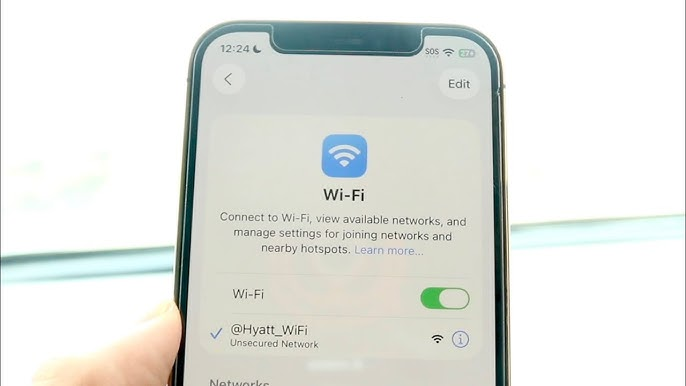一文概览主流DeFi协议二季度进展
原文作者:Rasheed Saleuddin
原文编译:Kyle
关键要点:
我们预计在今年剩余时间里,价值将流向那些产生收入的 DeFi 协议
随着 Fraxlend 和 fraxETH 的推出,Frax 有可能获得更多市场份额。迄今为止,该协议已获得 3630 万美元的收入
Synthetix 和 GMX 继续在 Optimism 和 Arbitrum 上主导永续交易规模和 TVL,每个协议带来的日收入约为 10 万美元至 30 万美元
dYdX (DYDX) 和 Uniswap (UNI) 将在其代币增值方面取得长足进步
crvUSD 和 GHO 的宣布标志着围绕特定协议稳定币的新叙事的潜在开始。除其他功能外,原生稳定币允许协议产生额外收入并推动其治理代币的效用。Curve 经过优化以提供深度稳定币流动性,因此它很可能成为这种叙事的战场
我们的第二季度最终报告侧重于熊市期间 DeFi 资产的发展演变,并探讨了主要协议的未来发展。
从 Maker 统治时期,到由 Synthetix 和 Compound 领导的 DeFi 夏季,到「DeFi 2.0」和「不稳定」的稳定币的虚假希望,再到现在 OGs 原语的复兴,DeFi 一直是一场漫长的斗争。在那段时间里,TVL 被用作衡量成功的最佳标准。
由于用户被不可持续的通胀原生代币奖励所吸引,TVL 失去了作为产品市场契合度 (PMF) 指标的有用性。用户加入项目以耕种和倾销他们的收入。一旦奖励减慢或停止,用户就会离开。代币价格下跌意味着承诺的 APY 变得无法实现。
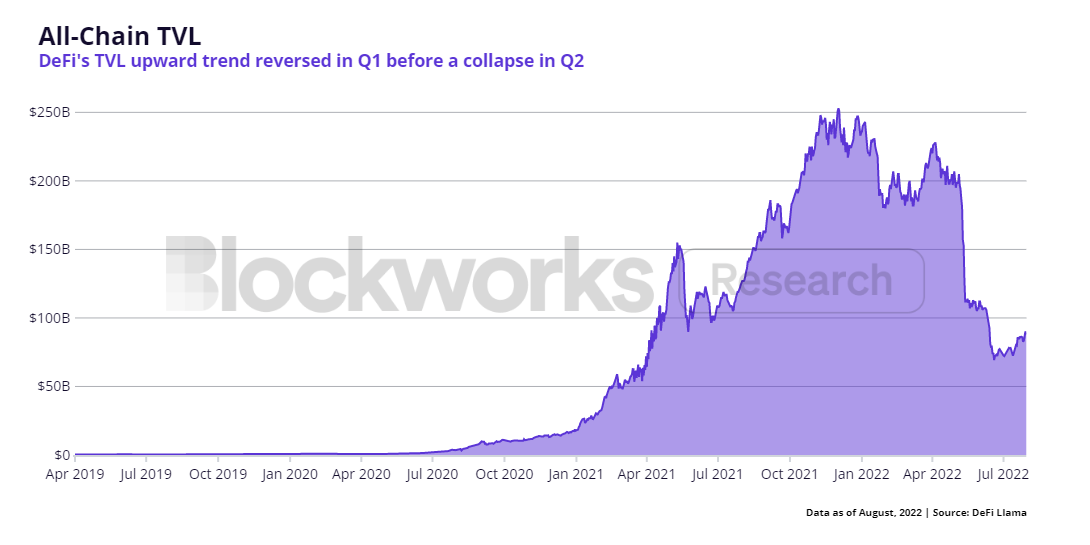
一个项目在启动后的前五个月内支付了原始分配的 14.7 倍,推动 TVL 到 2021 年创下历史新高。随着代币释放速度降至两位数的年化通货膨胀率,TVL 逃离。到第二季度末,每月奖励从每月 2000 万美元的高位下降了 99% 至 200,000 美元。
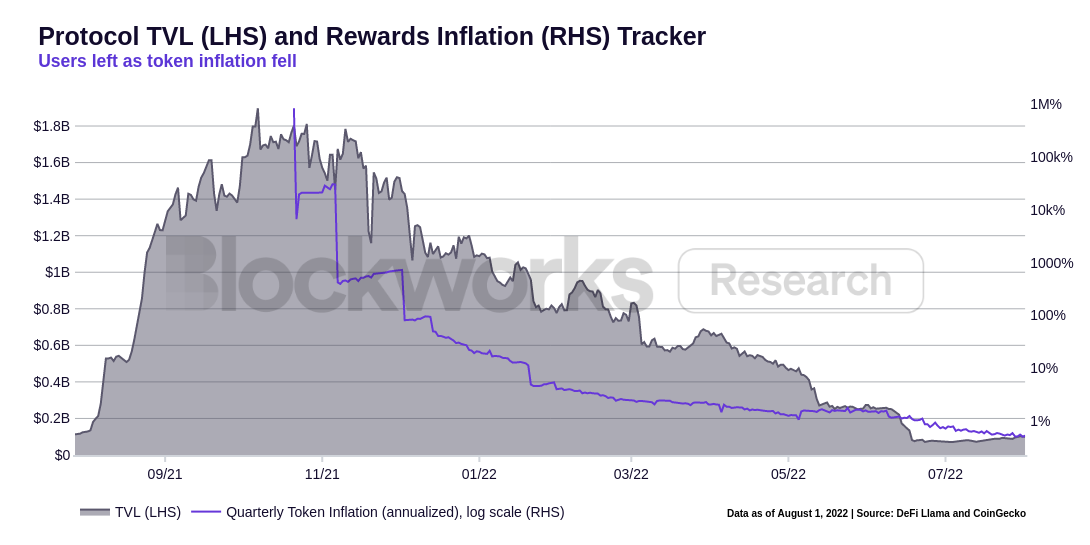
资料来源:DeFi Llama,Coingecko。2022 年 7 月 31 日
PMF 可以通过用户愿意为服务支付的费用来更好地衡量。临时奖励可以帮助降低客户获取成本,但协议需要用户在奖励结束后留下来。
虽然目前很少有协议为协议金库或代币持有者带来真正的价值,但用户为借入和交易代币、贿赂流动资金池以及在 DeFi 之外进行投资而付费。用户还通过 ETH 质押和铸币税赚取实际费用。Uniswap、dYdX、Convex、Frax、Aave、GMX、Synthetix、Curve 和 MakerDAO 均在 DeFI 费用排名前 20 位。
成长型股票很少(如果有的话)派息。早期的加密协议同样可能会考虑类似地积累和再投资费用收入来发展他们的业务。就代币持有者有权最终从他们支持的成功企业中获利而言,总费用将继续是一个关键指标,无论他们的收入是支付还是再投资。
我们认为,下一个牛市将由具有当前或未来价值增值的代币驱动。在本报告中,我们介绍了我们认为对 DeFi 的未来至关重要的协议的最新消息和牛市案例。涵盖的所有协议都拥有经过验证的产品市场契合度 (PMF) 并从真实用户那里赚取真实费用。
借贷
Aave
Aave 于 2022 年第一季度末在 6 个不同的链上推出了其 V3 产品,为市场带来了一些关键的新功能:
Portals 是促进跨链交易的「许可上架」桥梁,允许资产在跨不同链部署的 Aave V3 市场之间无缝流动。他们帮助解决了流动性分散问题
高效模式(e-mode)让用户在同一资产类别中获得更高的借贷能力,使借款人能够从抵押品中获得最大收益
隔离模式使 Aave 治理能够隔离某些新上架的代币并确定最大贷款价值比,从而限制协议对高风险资产的敞口。
Gas 优化功能将所有交易的费用降低了 20-25%
L2 特定功能增强了以太坊扩展解决方案的用户体验
Aave V3 现在看到的 DAU 比 Aave V2 多:
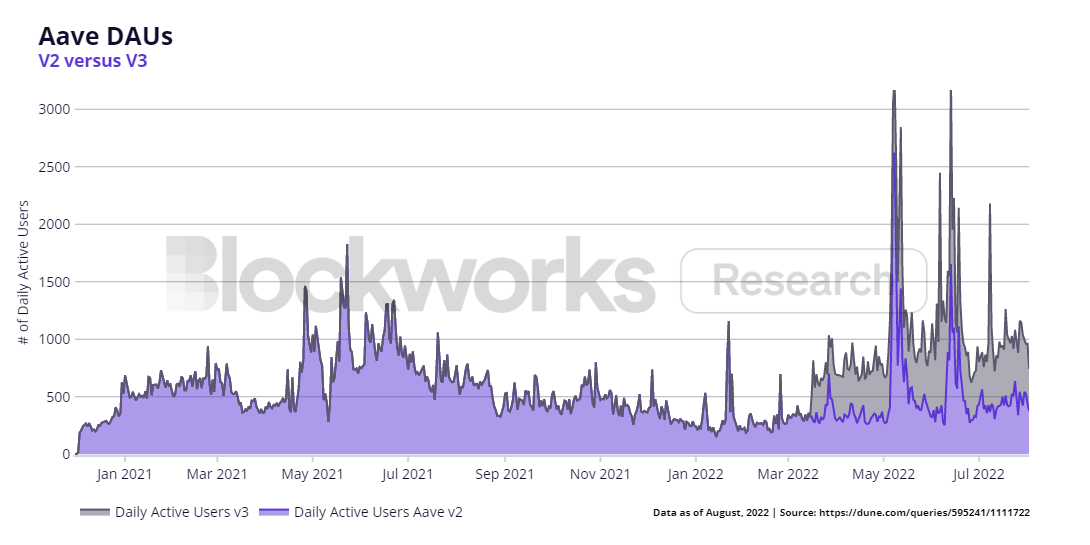 展望未来,所有的目光都集中在 Aave 最近提出的稳定币:GHO。发行 GHO 稳定币的投票于 7 月 31 日以压倒性的支持通过。该稳定币将允许 Aave 用户用他们提供的继续赚取利息的抵押品铸造 GHO。对于 Aave DAO 来说,这可能是一个巨大的收入机会,100% 的借款收入都归入 Aave 金库。Aave 论坛上最常见的担忧包括有必要适当审查潜在的促进者(即具有 GHO 铸造 / 销毁特权的人)、类似于 MakerDAO 的锚定稳定模块(PSM)的重要性、围绕 DAO 控制利率的争议、供应上限的重要性以避免 Aave 协议存在风险,以及使用 Chainlink 预言机跟踪 GHO 价格所涉及的风险。GHO 智能合约目前正在接受审计,随后将提出一份单独的提案,概述 GHO 的一个强有力的起始状态。
展望未来,所有的目光都集中在 Aave 最近提出的稳定币:GHO。发行 GHO 稳定币的投票于 7 月 31 日以压倒性的支持通过。该稳定币将允许 Aave 用户用他们提供的继续赚取利息的抵押品铸造 GHO。对于 Aave DAO 来说,这可能是一个巨大的收入机会,100% 的借款收入都归入 Aave 金库。Aave 论坛上最常见的担忧包括有必要适当审查潜在的促进者(即具有 GHO 铸造 / 销毁特权的人)、类似于 MakerDAO 的锚定稳定模块(PSM)的重要性、围绕 DAO 控制利率的争议、供应上限的重要性以避免 Aave 协议存在风险,以及使用 Chainlink 预言机跟踪 GHO 价格所涉及的风险。GHO 智能合约目前正在接受审计,随后将提出一份单独的提案,概述 GHO 的一个强有力的起始状态。
MakerDAO
Maker 在其现实世界的资产战略上取得了长足的进步,决定从 PSM 分配 5 亿美元给短期国债和公司债券,并与两家主要机构合作:
法国兴业银行为价值 3000 万美元 DAI 的代币化担保债券再融资
Huntingdon Valley Bank 获得高达 10 亿美元 DAI 的同等贷款合作伙伴关系,预计每年可产生 3000 万美元的协议收入
这继续形成两个阵营来解决他们的治理问题:不惜一切代价实现去中心化的阵营,以及支持董事会风格的治理结构以提高效率和增长的阵营。贷款监督核心单位(Lending Oversight Core Unit)治理投票是其历史上所有决策中参与率最高的,参与投票的 MKR 代币数量超过 293,911 枚,价值约 3 亿美元。投票以 60%/38% 的票数否决了该实施,暗示支持更加去中心化的治理结构。
Maker 仍然是整个 DeFi 的领先协议之一,在所有 DeFi 协议中保持最多的 TVL,约为 85 亿美元。作为借贷平台,Maker 在加密货币市场对杠杆的大量需求时处于最佳状态。这通常与 DAI 供应的扩张和收缩相对应。虽然上半年 DAI 的供应量下降了 27%,但此后供应量一直在扩大。虽然 7 月初的大部分上涨是由于 PSM 的增长,但自 7 月 27 日以来,由于市场对杠杆的需求正在缓慢回升,1.5 亿美元的 DAI 已经从非稳定币抵押品中铸造出来。
Maker 还将继续将 RWA 作为进入 H2 和该协议的长期愿景的优先事项。他们相信创建一个「Maker 标准」,以便将现实世界的抵押品加入 DeFi,这将使 Maker 在 RWA 的市场份额方面处于领先地位,并为其他 DeFi 协议创建自己开始加入的剧本。Real World Finance Core Unit 的成员 Teej 认为,在获得中小企业贷款平台 Monetalis Clydesdale 和希望将短期债券 ETF 代币化的瑞士银行 Backed Finance 的资金之后,RWA 可能占总抵押品的 10% 和 10 倍的盈余缓冲,而目前为 2% 的总抵押品和 2 倍的盈余缓冲。正在增加的 RWA 与 Maker 的旗舰加密借贷产品一起提供了非常可靠的收入流。
衍生品交易平台
dYdX
dYdX 是用于交易永续期货的去中心化交易所。在第二季度,dYdX 改进了其用户体验和功能集。列出的新资产包括 TRX、XTZ、ICP、CELO、RUNE、LUNA、NEAR 和 ETC,并通过了治理提案,将再增加 15 个。迅速上架代币将 dYdX 推向了可与任何永续期货交易所竞争的受支持资产集。实施了新的订单类型和更高的最大头寸规模,为大型基金和交易者提供了迁移到 dYdX 所需的工具。交易费用全面降低,并于 8 月 1 日对月交易量低于 10 万美元的用户完全取消。此外,他们还推出了自己的 iOS 应用程序,以提供无缝的移动交易体验。
dYdX 有完整的路线图。到 2022 年底,dYdX 计划从第 2 层 ZK-Rollup 迁移到使用 Cosmos SDK 构建的自己的主权 PoS 链。订单簿存储、匹配和验证者集将去中心化,从而增加协议的抗审查性。DYDX 代币将具有一种新的增值机制,作为 PoS 代币,交易费用分配给质押者。前面有一些明显的挑战,但 dYdX 完全定位为链上衍生品叙事的领导者,似乎正在获得动力。
GMX
GMX 是一种现货和永续交易所,支持 Arbitrum 和 Avalanche 的低 swap 费用和零价格影响交易,尽管市场整体低迷,但在整个第二季度继续得到采用。交易由多资产池 (GLP) 支持,该池通过 swap、做市和杠杆交易赚取 LP 费用。它已成为 Arbitrum 上最大的 dApp,拥有大约 3 亿美元的 TVL,并继续在 Avalanche 上以不到 1 亿美元的 TVL 获得牵引力。上一季度的一些亮点包括:
6 月 28 日,创纪录的 7,273 名新用户涌入,可能是由于 Arbitrum Odyssey 活动的推动(已被推迟)
突破 63 k 名独立用户
现在已经为 LP 产生了超过 5000 万美元的交易费用
历史交易者盈亏或部分 LP 收入现在为 3600 万美元
平均约 1,000 个 DAU,而去年为 150 个
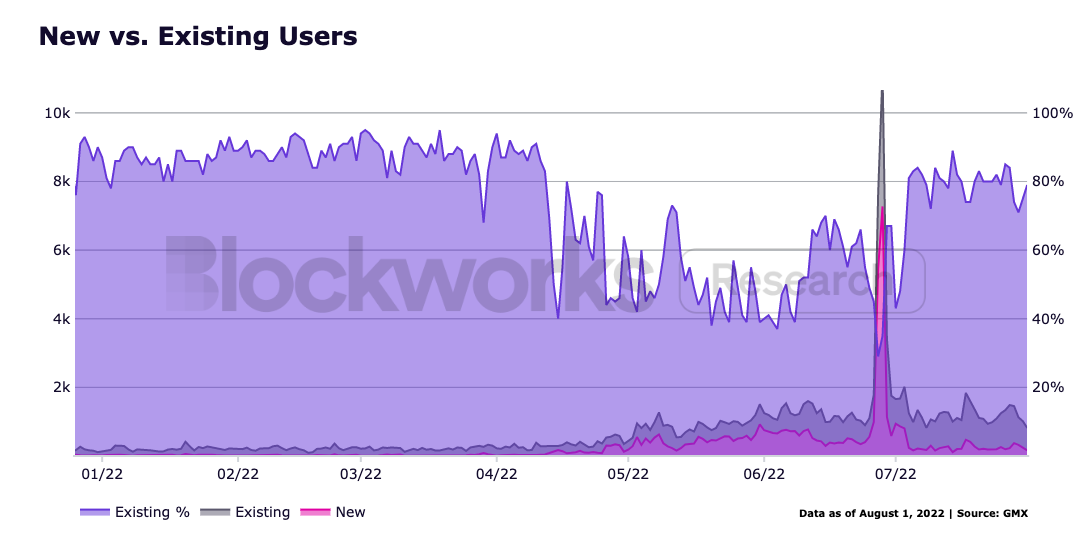
来源:https://stats.gmx.io
投资者预期 GMX 将在 2022 年下半年添加一些重要的新功能,除了 UI 润色和平台可靠性。Synthetics 预计将在未来几个月推出,这将为使用该产品的交易者提供更多选择。此次发布后,GMX 团队将开始在其他链和 X4 上进行部署:这是一种 AMM,旨在为矿池创建者和项目在其矿池功能上提供更大的灵活性。在标准 AMM 中,矿池创建者很少有自定义选项。GMX 团队相信,他们可以在这方面胜过现有的 AMM 并获得可观的市场份额。一些有趣的功能包括池的动态费用、允许交易者访问各种代币的自定义价格曲线、带有收益代币的池,或通过其他 AMM(如 Uniswap V3)聚合交易。GMX 的计划雄心勃勃,他们希望建立一个 AMM,成为其他项目利用甚至构建的平台。
Synthetix
第二季度,Synthetix 上原子 swap 的兴起,允许即时执行并且涉及 synths 的交易没有滑点。比直接配对交易更优惠价格的原子 swap 每日交易量高达 3.5 亿美元。随着第三季度的开始,原子 swap 仍然是 Synthetix 的主要收入来源。
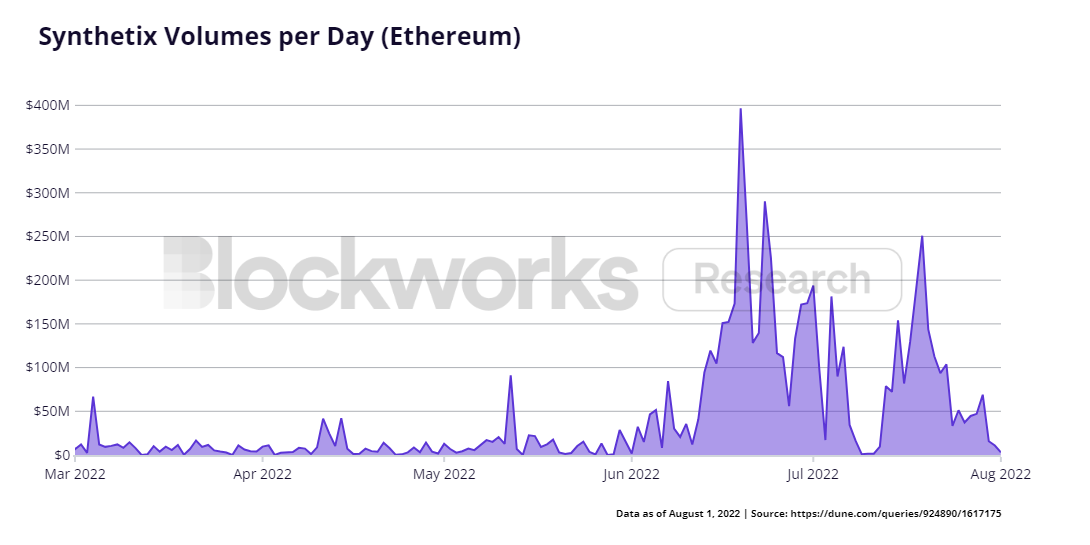
虽然 1 inch 一直是原子 swap 的主要需求来源,但他们仍然错过了一个交易路由路线:用户可以从 USDC -> sUSD -> sETH 进行交换 swap,反之亦然,但 sETH -> ETH 的最后一步必须是手动完成。1 inch 很快将为其路由器添加最后一步,这意味着我们可以预期通过 synths 进行路由的数量会更多,因此 SNX 质押者将获得更多收入。此外,其他聚合器已经开始实施原子 swap,包括已经使用 synths 从 ETH -> USDT 路由的 OpenOcean。随着 Curve 宣布他们的 OP 拨款提案,我们可以期待看到原子 swap 也用于 Optimism。我们预计原子 swap 将在第三季度继续广泛用于路由订单执行。
Synthetix 生态系统也看到了 Optimism 的巨大增长,这主要得益于 Kwenta 的永续期货日交易量超过 8000 万美元。Kwenta 上的永续交易将升级到 V2,今年下半年的费用显着降低,市场也更多。V2 还包括移动 UI 支持、交叉保证金交易、限价订单、止损和 KWENTA 代币的推出(以及交易者可能的空投)。SIP-254 还建议分配 20% 的 SNX 通胀来奖励平台上的永续交易者,进一步激励交易者使用 Kwenta 作为他们选择的平台。
自我们最近的研究报告以来,Synthetix 在愿景和升级实施方面完成了几项关键进展。Synthetix 打算推出「流动性即服务」,允许任何创建新衍生品的人通过直接连接到 synth,利用现有路由和深度流动性尽快增加流动性。这还包括一项新提案,使该协议能够采取 ETH delta 中性头寸,以允许扩大 sUSD 和其他合成器供应以充分满足需求。投票托管的 SNX 将为那些锁定 SNX 更长时间的人带来更高的代币通胀和费用收入。还有一些更重要的与 V3 相关的 SIP 在本质上更具技术性,这可能表明 V3 非常接近代码审计和发布。
稳定币
Frax
Frax 通过几种新机制进一步融入了 Curve 生态系统,并介绍了一些即将在不久的将来推出的产品:
Frax 基础池:一种新的稳定币池,可与 Curve 配对,以推动更多 FRAX 需求并鼓励合作伙伴的资本效率。
Frax 被列入锁定 CRV 的白名单:Curve 通过了一项提案,允许 Frax 投票锁定其用于 veCRV 的 CRV 代币,这赋予 Frax 对 Curve 更大的治理权。
Fraxswap:Frax 推出了一个新的 DEX,使用户能够在一段时间内按时间加权购买各种资产,以减少价格影响。该原语对于寻求管理其资金库的协议可能很有用。
2000 万美元的 FXS 回购:Frax 目前正在使用应计收入在公开市场上回购 FXS 代币。该 FXS 将被销毁或分发给 veFXS 持有者。已经购买了 200 万美元的 FXS。
Fraxlend:Frax 计划推出一个新的借贷 dApp,该应用程序将支持无需许可的借贷配对和自定义债务结构,这为现实世界的资产借贷、债券和抵押不足的借贷铺平了道路。
FraxETH:Frax 透露它正在信标链上运行两个验证者。Frax 计划创建一种 ETH 抵押衍生品 (fraxETH) 以支持其资金并创建新的 ETH 产品。我们可以假设 fraxETH 的所有收益都会以某种方式使 veFXS 持有者受益。
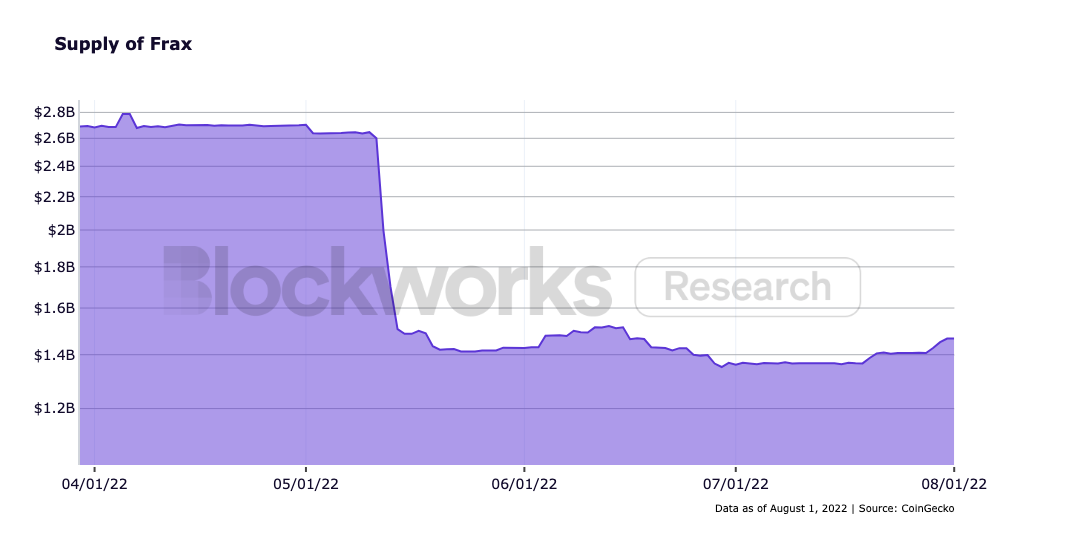
今年下半年,Frax 的 FXS 代币可能会因新产品的推出而获得大幅上涨。在今年早些时候几乎腰斩后,FRAX 供应正在缓慢反弹,最终为 FXS 带来更多价值。自 Frax Base Pools 推出以来,FRAX 的供应量增加了约 1 亿美元。目前,Frax 的金库中包含 3630 万美元的应计利润。Fraxlend 和 Fraxswap 开启了该协议带来更多收入的可能性,这将使 FXS 持有者长期受益。
Fraxlend 将标志着该协议的一个里程碑,它将作为一套完整的去中心化银行服务软件,包括 AMM、借贷平台和稳定币。该协议计划在第一天启动 fraxETH 抵押品,这将使用户能够借用 FRAX 来抵押其质押的 ETH 抵押品。Fraxswap 增加了两个新的流动性对,FRAX/SYN 和 FRAX/OHM,这可以为 AMM 带来更多的交易量。Frax 与 Curve 和 Convex 的协同作用为希望接触其产品套件的参与者提供了有吸引力的收益。
去中心化交易所
Curve 和 Convex
Curve 和 Convex 在第二季度都感受到了熊市的痛苦。上个季度我们看到:
超过 13 亿美元的 UST 存入 Curve,导致 Curve 和 Convex 的 TVL 收缩 76%。
Frax Base Pools 的推出和 FIP-95 的批准加深了 Frax、Curve 和 Convex 之间的联系。根据当前的 cvxCRV 价格,Frax 将通过 Curve 池将高达 95% 的 CRV 奖励换成 cvxCRV,或将 CRV 直接存入 Convex,从而稳定 cvxCRV 挂钩。
Convex 在 6 月 30 日解锁了创纪录的 2750 万个 vlCVX。虽然交易员在活动中大量做空 CVX,但大部分 CVX 立即重新锁定并造成暂时的空头挤压。最值得注意的是,Terra 钱包重新锁定了其 CVX,为新的 Terra 生态系统稳定币打开了大门。
Curve 正在推出一种原生稳定币 (crvUSD),创始人 Michael Egorov 表示该币将被过度抵押并具有革命性的清算机制。白皮书尚未发布,因此我们只能推测其设计和含义。
与该协议密切相关的开发人员表示,LP 代币和 CRV 可以作为 crvUSD 的初始抵押品。支持稳定币的特定资产对其成功至关重要,因此 Curve 可能会通过类似于其引入新指标的过程将接受的抵押品列入白名单。Convex 目前持有 Curve 53.9% 的投票权,因此获批的 LP 代币很可能是 Convex LP 代币,而不是 Curve LP 代币,双方协议互惠互利。Convex 还能够将 cvxCRV 列入白名单,并且额外的实用程序将有助于加强 cvxCRV/CRV 挂钩并增加永久锁定在 Convex 中的 CRV 数量。如果 CRV 必须首先被投票锁定为 veCRV 才能成为合格的抵押品,那么 Convex 的金库中仍然拥有超过 3.6 亿美元 veCRV 的强大地位。Convex 可以使用其 veCRV 来铸造 crvUSD 并开始种植自己的 CRV。新收入流产生的 CRV 可以永久锁定为 cvxCRV 并支付给 Convex LP 和 vlCVX 储物柜,从而增加 Convex 的价值主张,同时通过减少供应使 Curve 生态系统受益。
虽然 LP 代币抵押品创造了对资产存款的需求并增加了 Curve TVL,但 CRV 和 veCRV 抵押品将 CRV 从流通中移除,这是 Curve 可持续发展所必需的。全年锁定 CRV 总量稳步增长至 41%,目前平均锁定时间为 3.6 年。此外,CRV 释放量每年减少 15.9%,下一次减少发生在 8 月 14 日。对锁定 CRV 的需求增加以及 CRV 供应的减少为 2022 年剩余时间看涨 CRV 创造了环境。
crvUSD 和 Aave 的 GHO 稳定币的宣布标志着围绕特定协议的稳定币的新叙事的潜在开始。除其他功能外,原生稳定币允许协议产生额外收入并推动其治理代币的效用。例如,Frax 通过开采 FRAX 产生铸币税收入,Aave 允许 stAAVE 持有者为借入的 GHO 支付较低的利率。如果这种趋势持续下去,将会有很多稳定币争夺流动性,Curve 很可能成为战场,因为它经过优化以提供深度稳定币流动性。围绕 Curve 和 Convex 建立的贿赂市场使其他协议能够通过利用 CRV 释放有效地为其资金池租用流动性。新池将推动 TVL 和 swap 的增加,使 Curve 生态系统受益。此外,其他协议可以将原生稳定币与 Curve 上的 Frax 基础池(USDC 和 FRAX)metapool 配对,为 LP 生成 FXS 和 CRV 奖励。FraxBP 有能力成为稳定币流动性的事实上的基础池,进一步巩固飞轮。
Uniswap
Uniswap 进军 NFT 的步伐才刚刚开始,下半年肯定会有更多消息。6 月,Uniswap Labs 收购了 NFT 聚合平台 Genie。这次集成将使 Uniswap 能够促进所有数字资产的交易,而不仅仅是 ERC20。Uniswap 计划与 sudoswap 集成,让交易者可以立即为其 NFT 提供流动性。
随着第二季度增加了两个新部署,这个 AMM 现在已经部署在七个链上,包括 Gnosis、Moonbeam、Optimism、Polygon 和 Arbitrum。Uniswap 一直保持其 DEX 市场领导者的地位,第二季度的月均交易量超过 470 亿美元。Uniswap V3 自推出以来已完成超过 1 万亿美元的交易量。在短时间内,Uniswap 的总费用是所有平台中最高的,超过了以太坊和比特币。
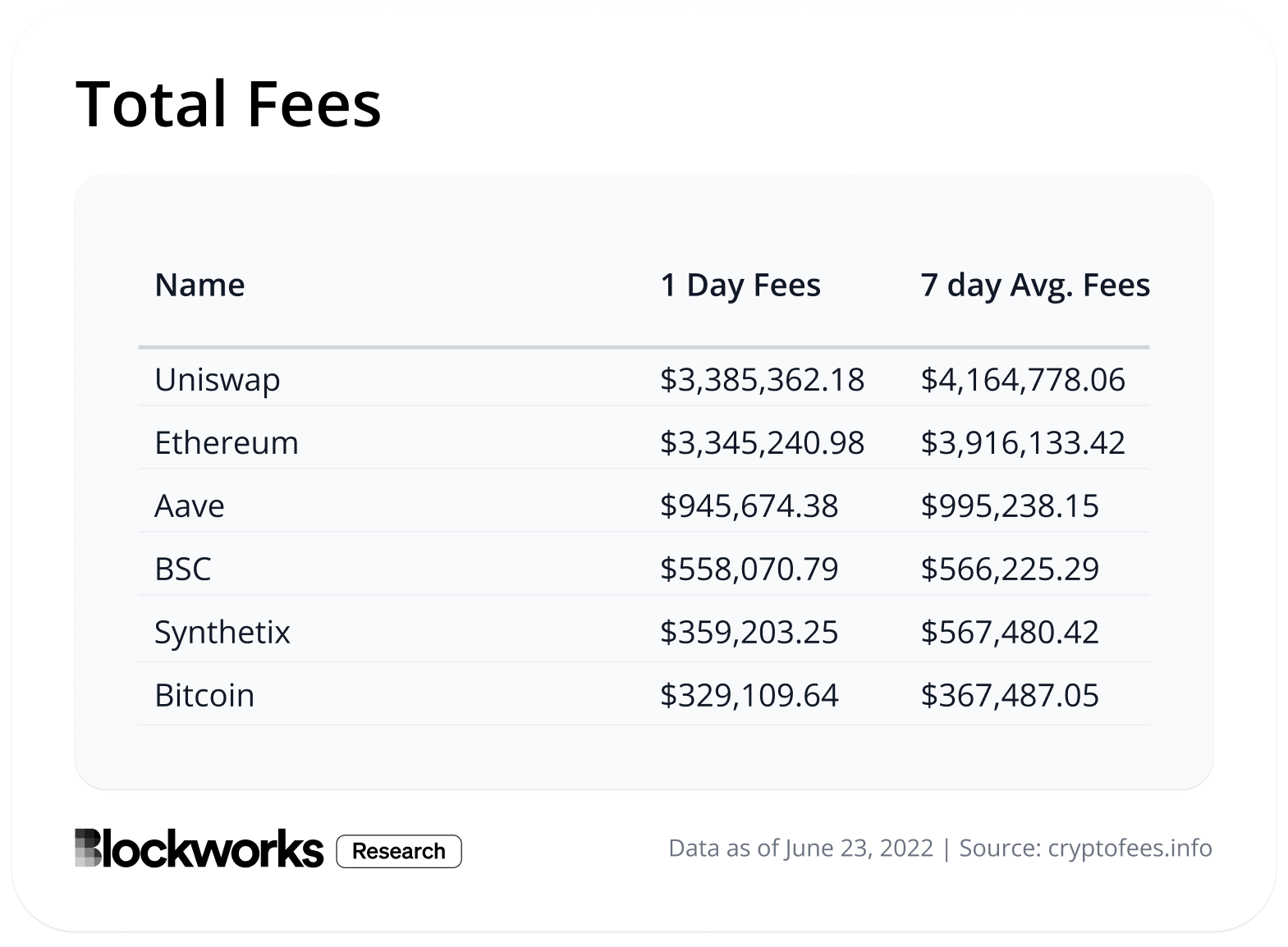
UNI 治理正准备测试费用开关功能。7 月 21 日,一项衡量 UNI 持有人关于实施费用开关的情绪的治理提案获得通过。虽然具体细节尚未确定,但可能很快就会进行一项试验,从 V3 LP 的 swap 费用中抽取一定比例并将其重新转移到 UNI DAO 控制的金库中。这对于 UNI 的增值来说是个大新闻。我们将在本周发布对该试验的深入了解。
寿司(Sushiswap)
寿司一直在忙着交付新产品。他们部署了一个使用 Stargate 进行桥接的跨链 AMM,使用 SushiGuard 发布了 MEV 保护交易,并推出了 MISO 2.0。Miso 是一个初始 dex 发行 (IDO) 平台,任何人都可以轻松地为新代币筹集资金。该交易所现在在九个链上运行,用户可以一键进行交易。Sushi 推出了限价单功能,并通过了一项重组 DAO 组织的提案,以帮助对抗微观治理。
Sushi 正在寻找新的领导人(「主厨」)并招聘大量职位。有了新的主厨和更好的支付贡献者机制,Sushi 有望绕过他们过去看到的领导层争议。与 Uniswap 一样,Sushi 在 NFT 市场 Shoyu 也有大量发展,包括稀有工具、更好的 UI、优惠、扫货功能、gas 效率和社交功能。
最后的想法
尽管市场条件不利,活跃 DeFi 协议的开发人员仍继续发布代码更新。我们已经列举了一些市场最爱的协议及其相应的上涨催化剂,这些催化剂可能会在未来产生积极的结果。目前,以太坊上的 DeFi 继续在该领域占据主导地位。对于投资者而言,寻找具有增值价值的创收产品和代币可能是今年剩余时间的一个很好的策略。


